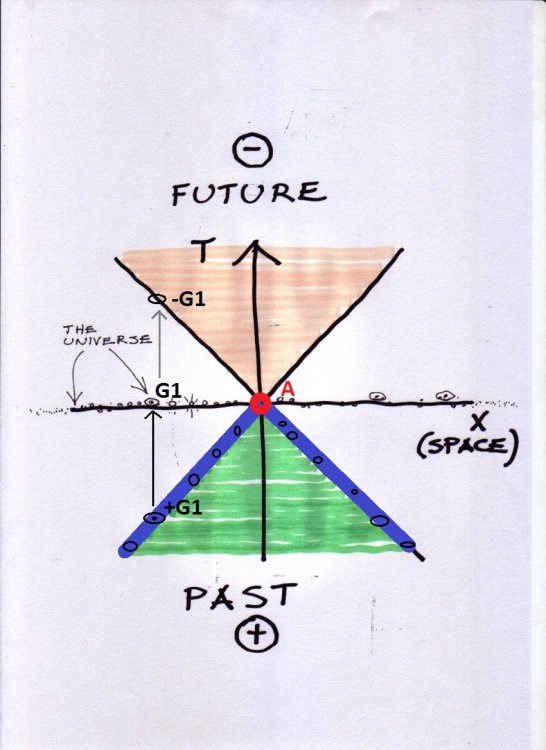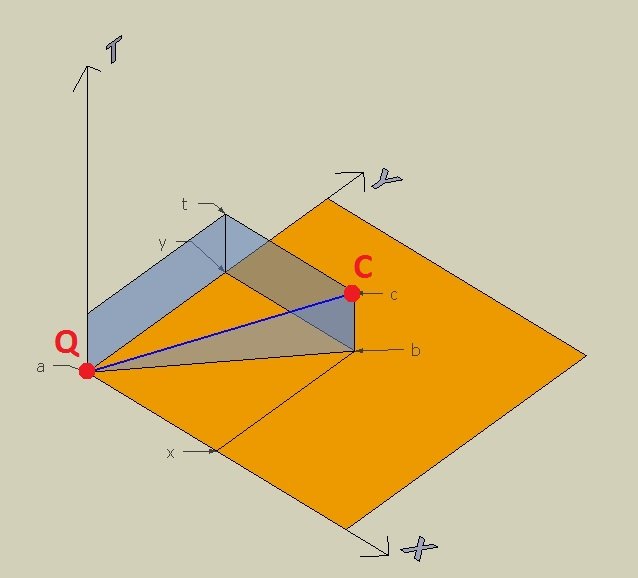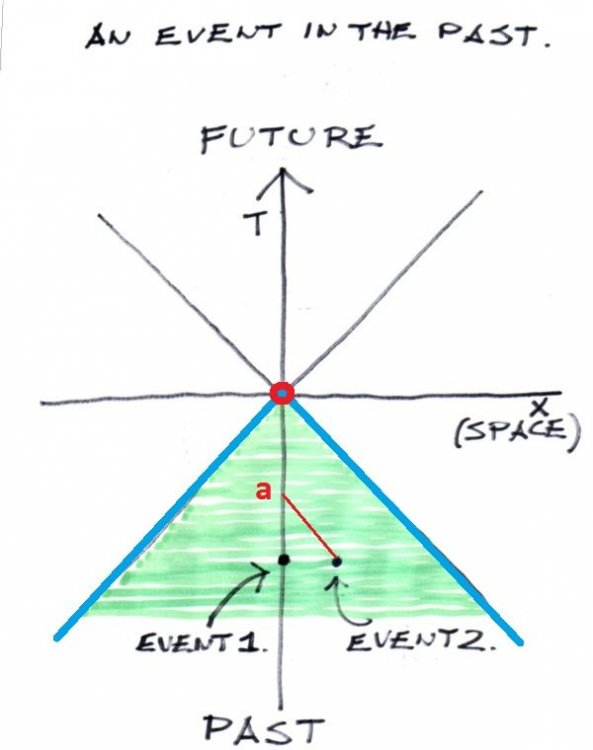-
Posts
6258 -
Joined
-
Last visited
-
Days Won
2
Content Type
Profiles
Forums
Events
Everything posted by michel123456
-
It is worth noticing that they use robots for taking the scrap out. Pictures from an article in Greek newspaper https://www.kathimerini.gr/1034458/gallery/epikairothta/kosmos/etsi-sw8hke-h-notr-ntam-apo-thn-katastrofh
-
Well, to me it means that observation influences the phenomenon, or IOW that is not possible to observe without influencing the phenomenon (at least concerning the extremely small). IOW observing the extremely small is an action that provokes a result. Which corresponds more to a measurement as I understand it. When you are taking a measurement you are doing something, you just don't sit and look. If the concept is that observing is a passive thing, then effectively everything becomes incomprehensible.
-
Yes & no.
-
You're welcome. Yes in my understanding measurement is an act, it is not passive as observation seems to suggests. Because I believe the misunderstanding comes from the fact that observation is understood as a simple reception of information that does not influence the phenomenon. And when one concludes that observation influences the phenomenon everything becomes incomprehensible. Measurement is clearly an action and I think that there must exist some example of a measurement (even at macroscopic level) that influence the result of an experiment.
-
Observation or measurement?
-
Is the universe as a whole an "isolated system" ? Same question here. The universe is complicated.
-
It is Greek. ψίθυρος (pseetheeros) whisper
-
Can you prove it? By which means? For example, can you communicate with an alien (or a spaceship) that is currently observing the Earth a year (or a month) ago?
-
In this scenario, objects are somehow extruded through the time dimension. I existed yesterday & I exist today: that makes 2 "me" along the time line. Which means that the Time dimension does not behave like the Space dimensions. When an object is displaced in space it does not "extrude", it changes coordinates. But if you consider that there is only one single "me" sliding along the Time line, then the back & forth coordinates are empty.
-
Q is placed at point a (t=0) at the beginning of the path. The observer at point c has moved from there (t=1) and would consider Q in his past. The common understanding say that c would consider that Q is the same himself in the past 1 minute ago (or 1 year ago : Q and c are the same observer that "travel in time"). What I say (unconventionally) is that since c cannot observe Q (you cannot directly see yourself 1 minute ago) it means that Q could be a different object than c. The condition for Q to exist as a different object is that the spacetime coordinates at point a are free. Because if c is a continuing entity that is somehow extruded through time between a and c, then it means that the coordinates at point a are occupied and thus Q cannot be a different object (and that is the convention).
-
I guess it is a historical question. Look at Archimedes, it was the problem the King of Syracuses asked him to resolve. see https://www.math.nyu.edu/~crorres/Archimedes/Crown/CrownIntro.html IOW If you know the material of the object & its density, simply weight it.
-
Fair. But not knowing may lead to "not existing".
-
Yes, the restrictions of Relativity are counting. What I am proposing is that our reckoning of the past is relative. An event in our past will be perceived as immutable, and there is no physical way to "jump" into a FOR that would see otherwise (that would need an override of SOL). In the diagram it is represented as a "jump in time" along the life line: it is not physically allowed. In my POV we are sliding into the time dimension without knowing what is in our front or in our back because of Relativity. Relativity forbids us to have any direct knowledge of these objects. But we should have indirect indications that those objects exist. One of the indication would be that the Observable Universe is too empty (that there is not enough matter in it).
-
Basically, everything we are observing with our telescopes belongs to the past, and it is evolving. To me it shouldn't matter whether things are in the past, the present, the future: everything is evolving (reminding Heraclitus). Simply it happens that the things of the Universe that cross our line of sight are the one we observe (looks like a tautology). And since our line of sight is dictated by the Speed Of light, we are observing the objects that lie on the diagonals of a spacetime diagram. All the other objects are not directly observable, so we consider they don't exist. The regular way to look at a spacetime diag. representing the Universe is something like this: We (the human beings) are on planet Earth at point A. What we are observing at t=0 lies on the blue thick lines. That is the image we get from the Universe in which we recognize Galaxy G1. I will call it +G1 because it is real thing we are actually observing (a reality solid as the desk in front of you). We are figuring that "today at T=0" the galaxy +G1 is not there anymore but has moved to point G1 where our calculations give us some new coordinates. We have no contact with point G1 and we must imagine that Galaxy G1 is there. At some time in the future the galaxy will be in point -G1 (the negative shows simply the future). In our current understanding, G1 is one and single Galaxy that traveled through time. The diagram is full of such galaxies that completely fill the diagram. In this diagram nothing moves (not even us). It is the Block Universe, frozen. For showing the passage of time, we must slide point A upwards. And Galaxy +G1 is sliding upwards at the same pace. Now, I (myself) am considering that this is a bizarre way of thinking, because the Time dimension does not behave the same way as the other 3 spatial dimensions (see argumentation above). What happens when we are taking back from Time this peculiar power to freeze everything? Well, the result still works. The observable Universe is still exactly on the blue thick lines. And as we are sliding upwards in the diagram, so is the Observable Universe. The only bizarre element is that the diagram is strangely void. How in the hell is it possible that the O.U. corresponds exactly to our diagonal? The next step is to fill the diagram (the entire sheet of paper) with galaxies. That doesn't change much to the situation: as we slide above in the diagram, so are all the galaxies, so is the O.U. Simply, as I stated before, it happens that the things of the Universe that cross our line of sight are the one we observe. After that I will return the question: what is the evidence that the past doesn't evolve?
-
Like the present evolves. Exactly in the same way.
-
Definition of "path" = a route or track between one place and another. (taken from https://dictionary.cambridge.org/dictionary/english/path ) I was also thinking to the word "trajectory" but the definition does not match exactly (it has already another meaning) The concept is similar: on a path (or a trajectory) there is a single "object" traveling. The path itself is simply a set of coordinates, and the object C occupies only one of these, no matter its state of motion. it is a situation of multiple exclusive: if one coordinate is occupied the others are not. In other words, my concept can be reduced to this: IF you exist today, you don't exist yesterday (anymore), and you don't exist tomorrow (yet). There is no "other yourself" in the past when you were born because the Time dimension has basically the same properties with the spatial ones. Time should not have any "special property" that freezes everything in it. In this case, Spacetime should not be considered as a block, the past is free to evolve, the future also. And the past & future can contain other objects than those we are currently observing. Which means that the Universe is much more filled than previously thought.
-
I never mentioned the word "particle" because I din't want to enter this part of physics. I am talking about pedestrians & busses if you like, I called "objects" in my OP. And the question is whether the blue line is a path or not, and whether its projection is still a path. I could animate the 2D graph (this one below) But since I introduce time as a vertical axis, I cannot animate it any more, that would be introducing a second time (cheating as you said). So I will refrain to do that ( I have learned from previous experience). Now you wrote No. I could animate the point going from a to b. The path [a,c] is in spacetime. The question is: in the 3D diagram , can I say that the blue line [a,c] is a path and thus consider that at t=1, when an object C is at c it means that the point a is a free coordinate and receive another object Q. The common reaction to that would be "Bogus, Q cannot be there because Q belongs to the past of C and as we (human beings) know the past cannot change." But if I (myself) stick to the diagram, I can put Q & C altogether without any conflict. Q will be at a and C will be at c. No problem, no issue. The problem arises only when we (H.B.) give to the T axis this extraordinary faculty of "never change". As i said earlier, if I label the vertical axis Z, we have no problem. The problem comes from some axiomatic property that we input to the T axis. The next step would be to say, whathever, if Q existed I would see the past change. Would I ? The common conception is that Q is an ancient event of C, that the blue line represents the "life line" of C. It is a solid object that does not allow another object Q enter inside. And that is thus my question: why do we consider things that way?
-
Why do you say that? I guess it is because the axis is labelled T. If I had labelled Z, you would'nt have any problem, right? You would agree that the blue line is a path & that multiple points can be placed on it.
-
Well I suspect that we (the human beings) have given properties to Time that do not come out from a simple but rigorous geometric treatment. I should have said "axiomatic properties".
-
Yes I use the points a & c as defined by both spatial & temporal coordinates. Why inconsistencies & confusion? Isn't that what you are doing in a spacetime diagram? Why? Take a look at the diagram again. . If the blue line [a,c] is a path, then its projection is also a path. Why would it be treated differently in one direction (the XY plane) than the other (the YT plane)?
-
The Human Beings generally. Yes we agree. Yes. Yes (I wonder if we are talking about the same concept) Resuming: Say that object C starts at point a and t=0. What I say is that when the object C is at c (or anywhere else) the point a is free for another object (coordinate t=0 is free, C is not there any more) Conventional explanation say that no other object Q can be at a because a was once occupied by the object C (coordinate t=0 is constantly occupied by C) I hope you follow the concept & see the difference.
-
Sorry, it is the Y axis.
-
In this simple diagram I am representing the displacement of an object from point a to point b (see below very short video explaining the concept) record_000010.avi I have put the axis X & Y, so the displacement takes place in the two-dimensional space of a sheet of paper. The sheet of paper is in orange colour Since we are talking about an “object” it is commonly understood that during the displacement, the object will go from a to b following the path [a,b]. When the object will reach point b, it will have gone from a (that looks evident but wait & see). The line ab is a path. Now, it is also known from the laws of physics that this displacement could not take place without time. So let’s introduce the 3rd dimension T. The vertical axis is Time. We see that the path from a to b has been transformed from a path from a to c. The projection of c upon the sheet of paper is point b and the projection of the same point c upon the XT plane is the point t. My question is: Why is it commonly understood that the line [a,b]represents a path contrarily to the line [a,t] that we do not commonly understand as a path? The question arises because it seems to me that the commonly accepted representation of the line [a,t] is that it represents the object itself along TIME, i.e. that the object literally IS at all points of the line [a,t] . My interpretation is that it is not the case. To me the line [a,t] is a path (to be more precise, it is the projection of the path [a,c] ). It means that when the object is at point c, it is NOT at point a altogether. When the coordinates of point c are occupied, the coordinates of point a are free & available for another object. Thank you for your inputs. This last diagram is the perpendicular projection as seen from the right side. We see the horizontal Y axis (of Space) & the vertical axis of Time. The blue line is the projection of the path [a,c].
-
Here below a Spacetime diagram. In this diagram, time runs from bottom to up. Space is reduced to 1 dimension. The sheet of paper is 2 dimensional and represents Spacetime. You are at the red point as an observer at T=0 Conventionally, the Speed Of light is represented by a diagonal at 45 degrees. Since time goes by convention from bottom to up, the past is on the bottom of the diagram. The future is above. The vertical line is your "life line". You don't move from your chair. Event 1 is yourself in the past (say 2 years ago). Event 2 is something that happened far away from you, you saw this event happening 1 year ago when you were at point a (this event happened 1 LY away from you). All the events from which you can directly observe through information traveling at SOL are upon the blue lines: it is the image you get from the universe looking at the stars. The set of events in the green zone are what we call " the past". All the rest of the diagram is not observable. It will be observable in the future, as time goes by (that is to say: as the red dot travels up in the diagram). In this representation, YOU are traveling in time, time itself is a simple background (like space) And please take note that event 2, which belongs to the past, is not currently directly observable. Similarly, your own past (event 1) is not directly observable by you. If anyone detects an error please inform me.





